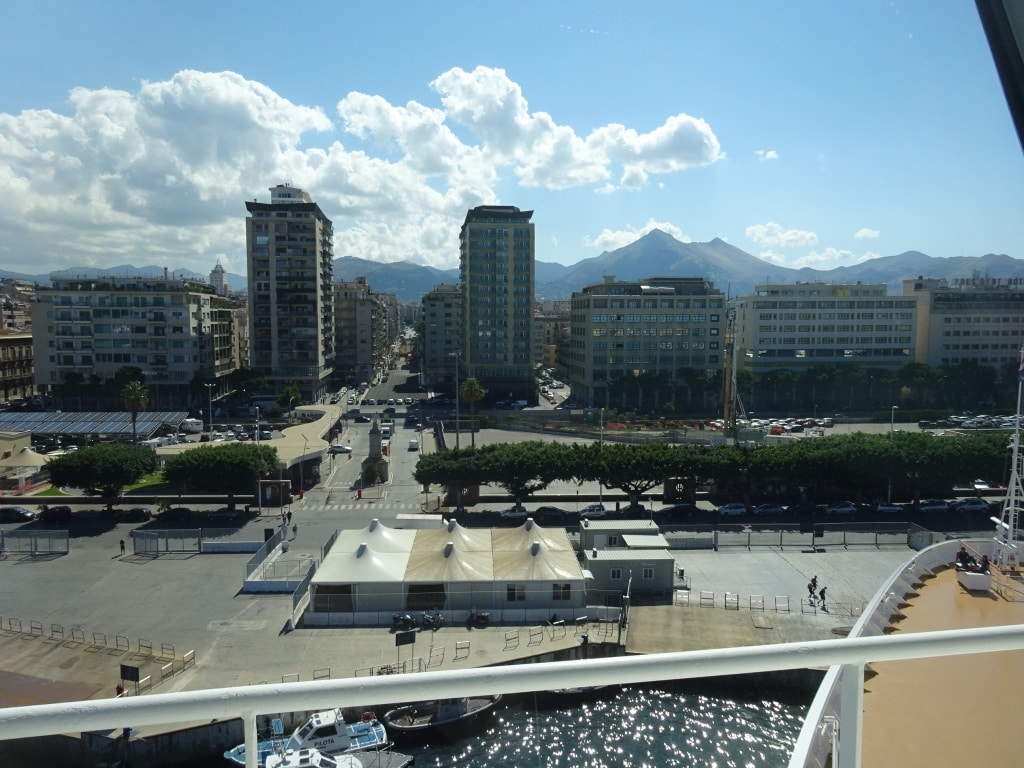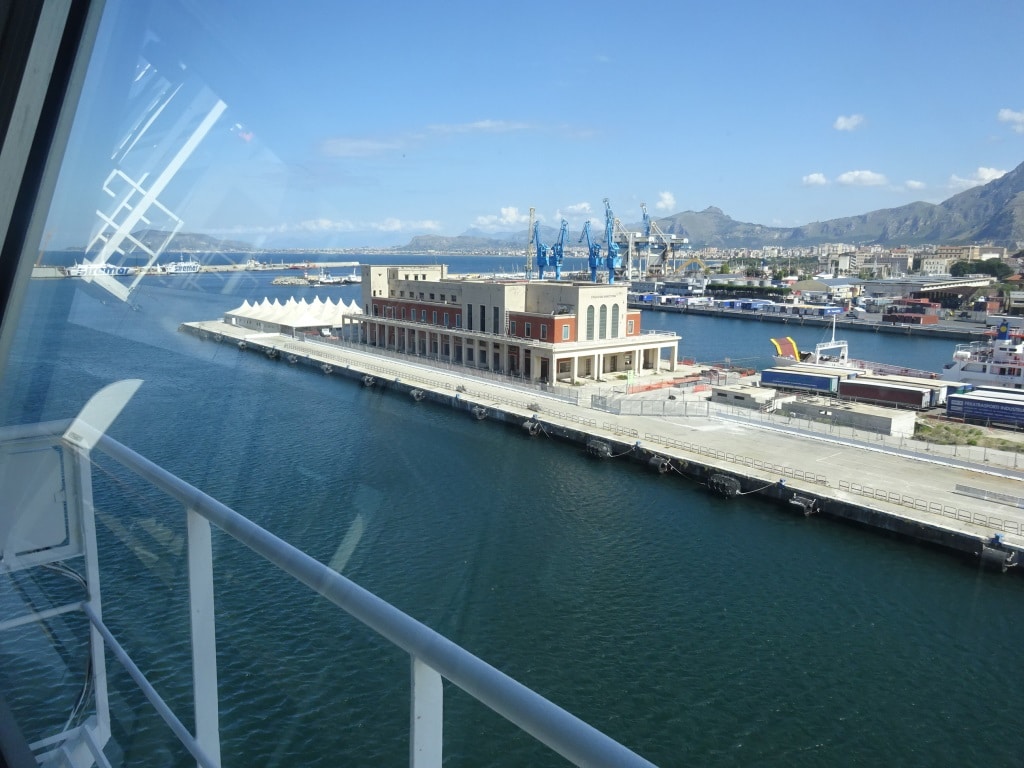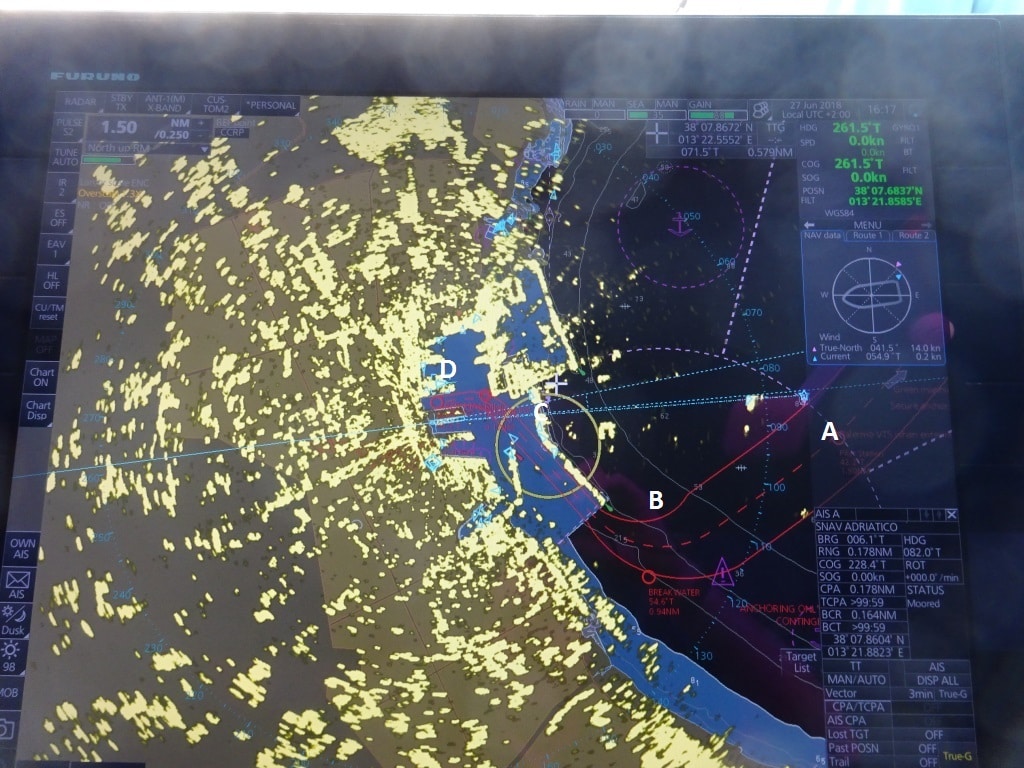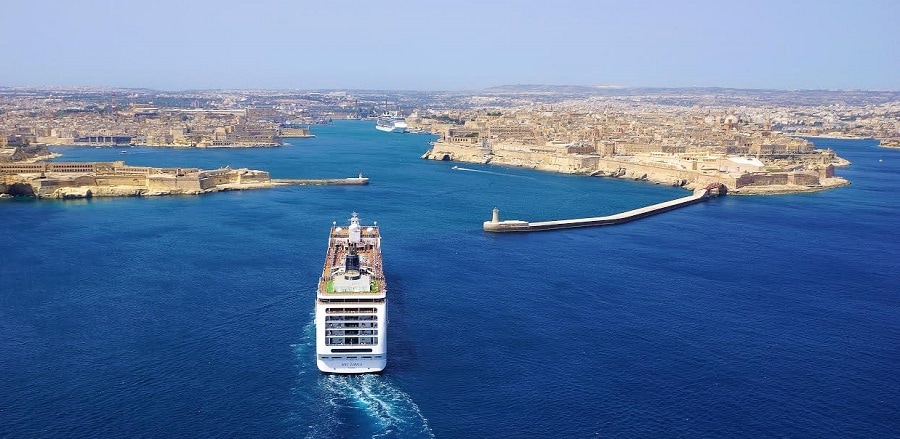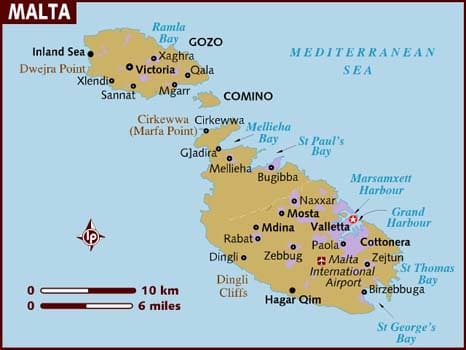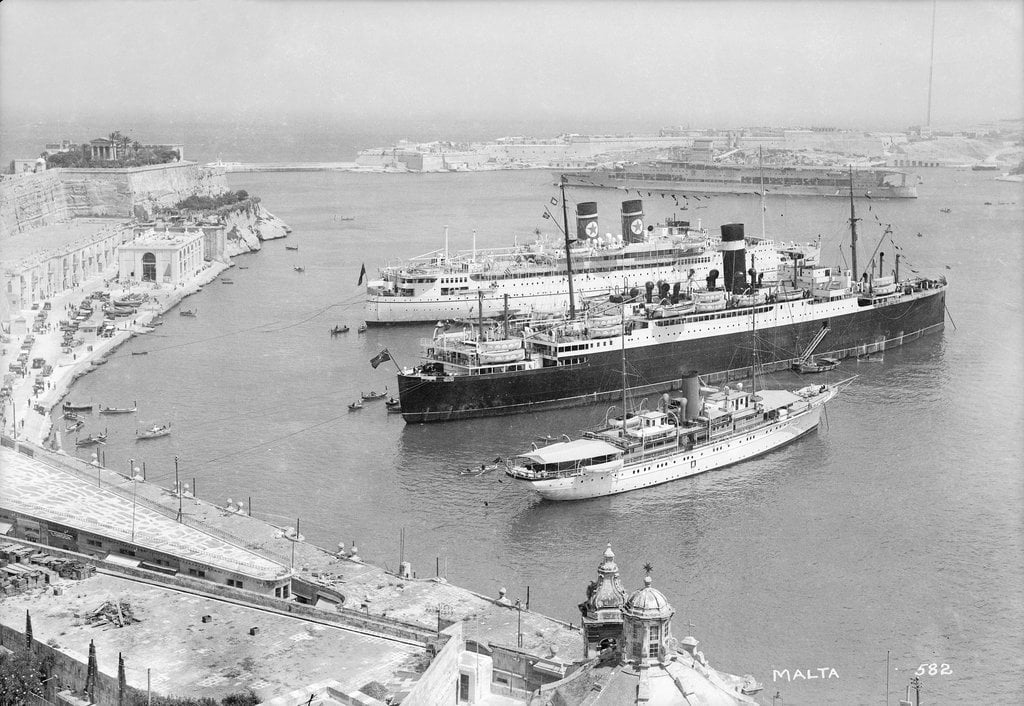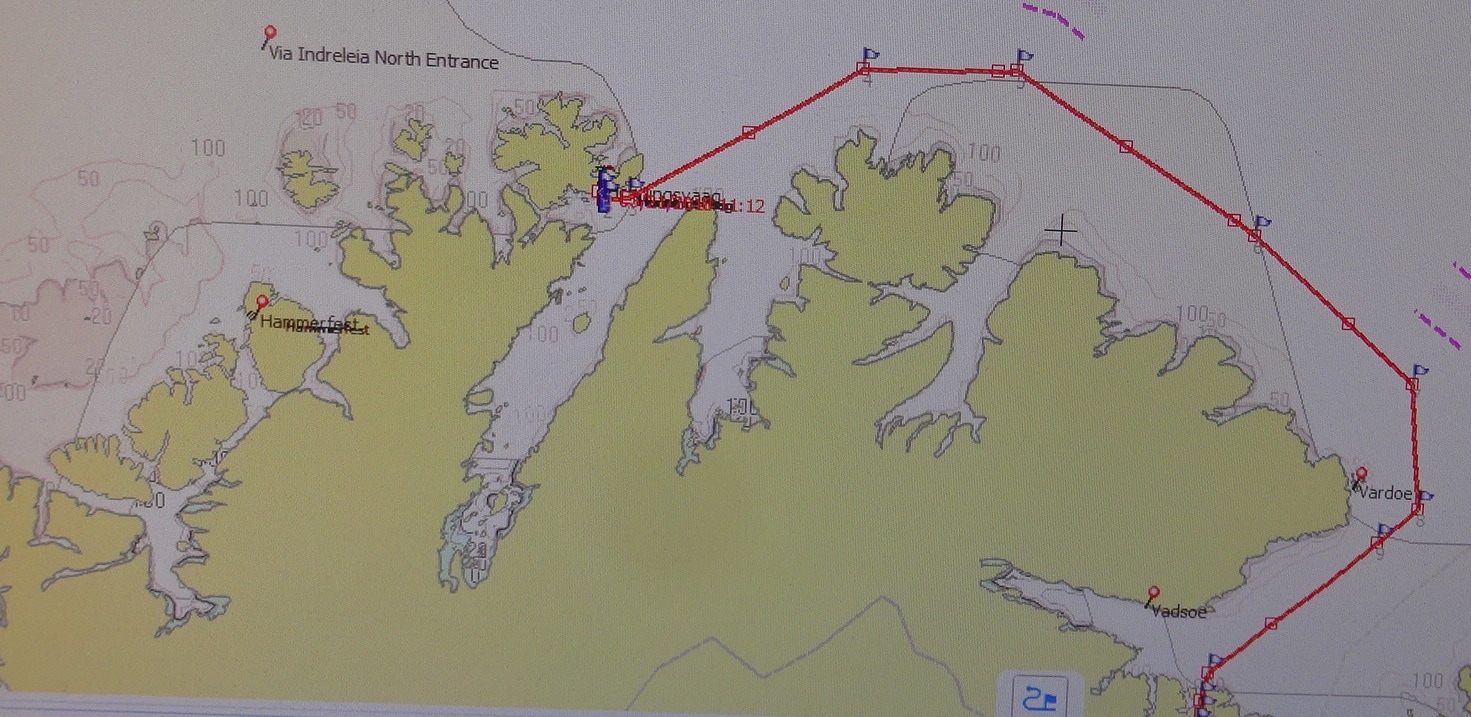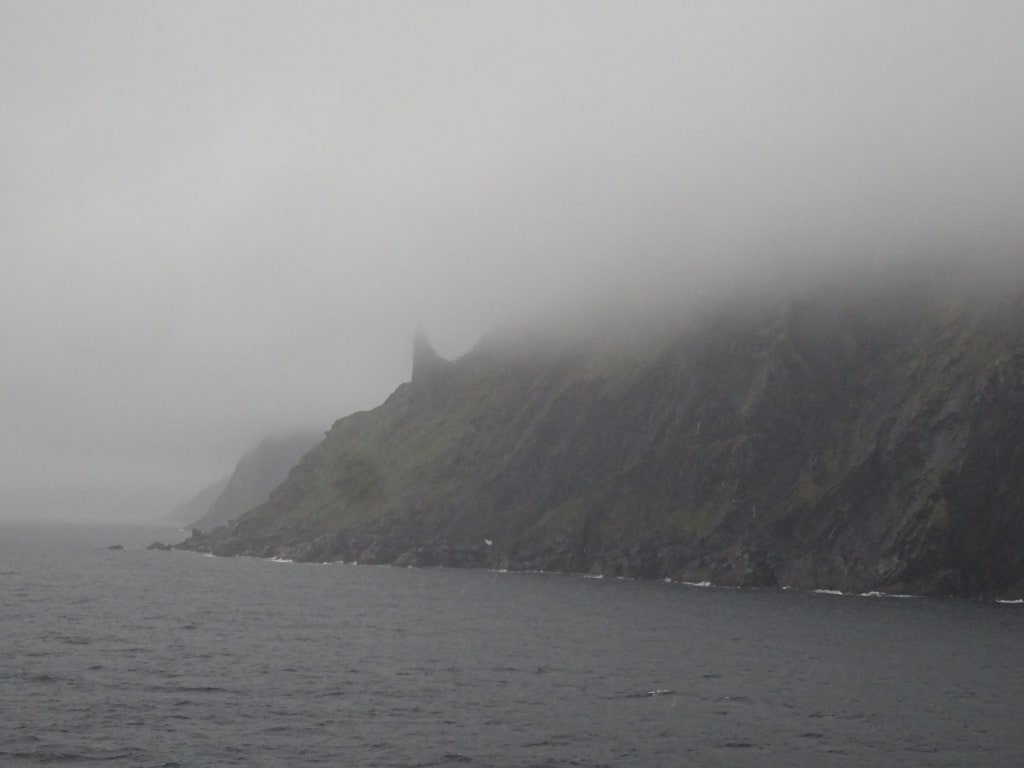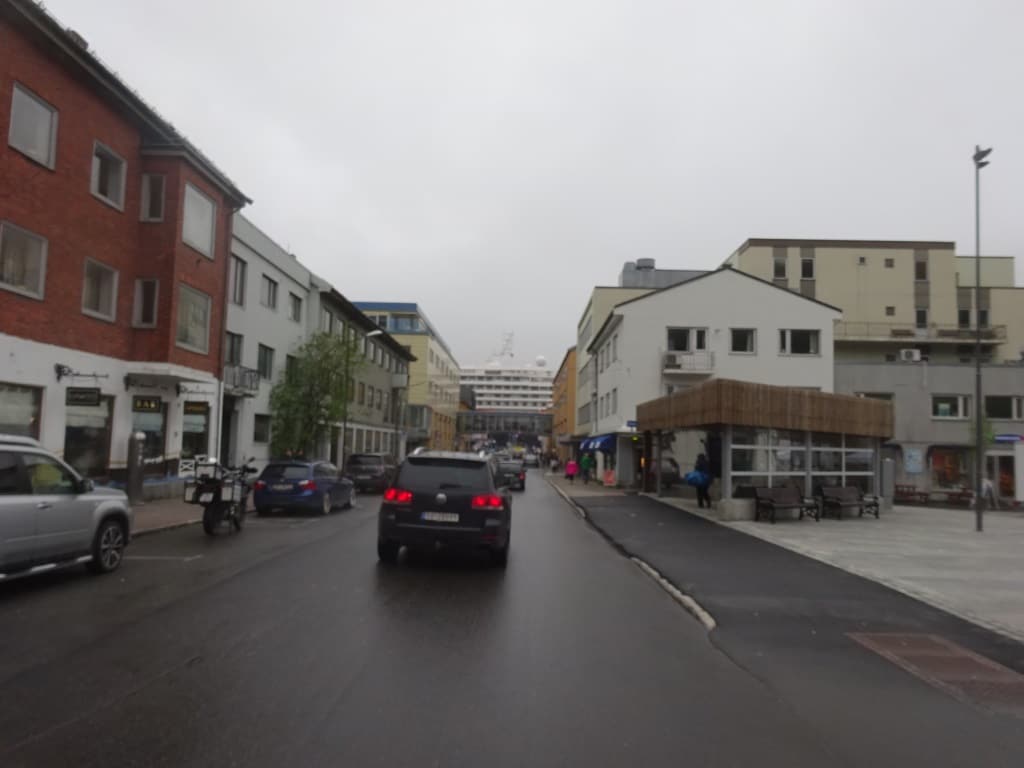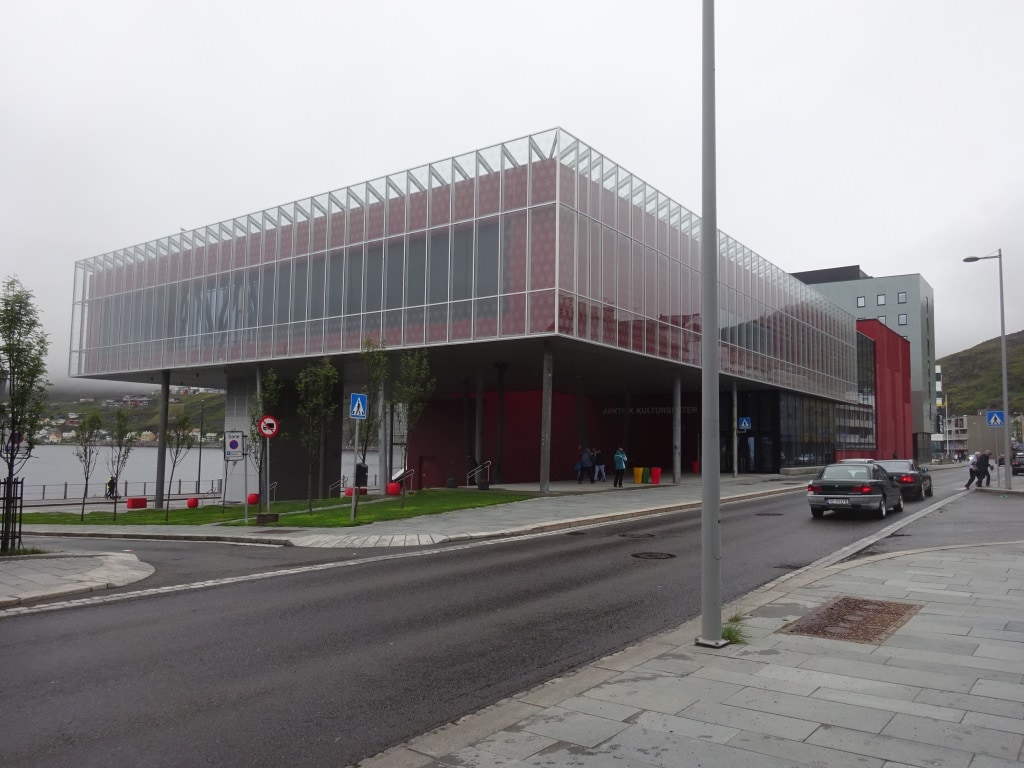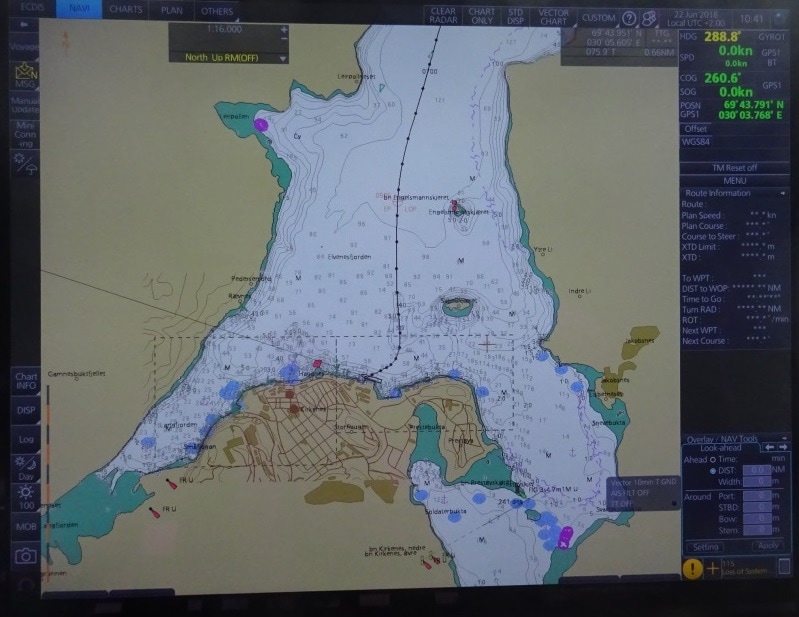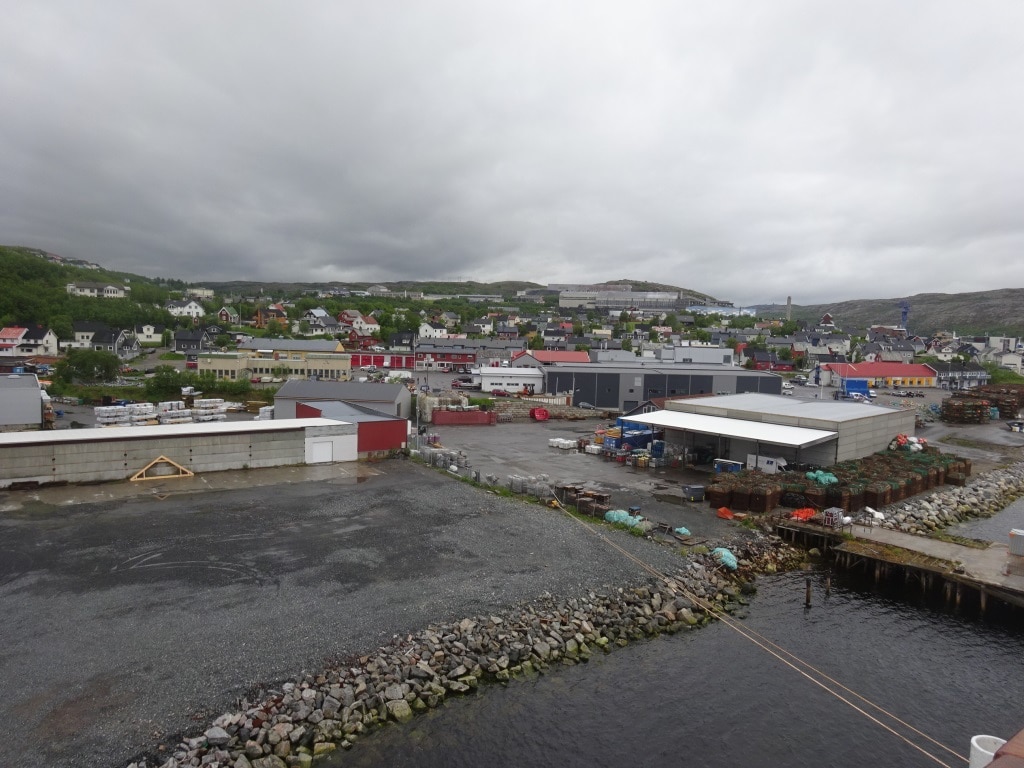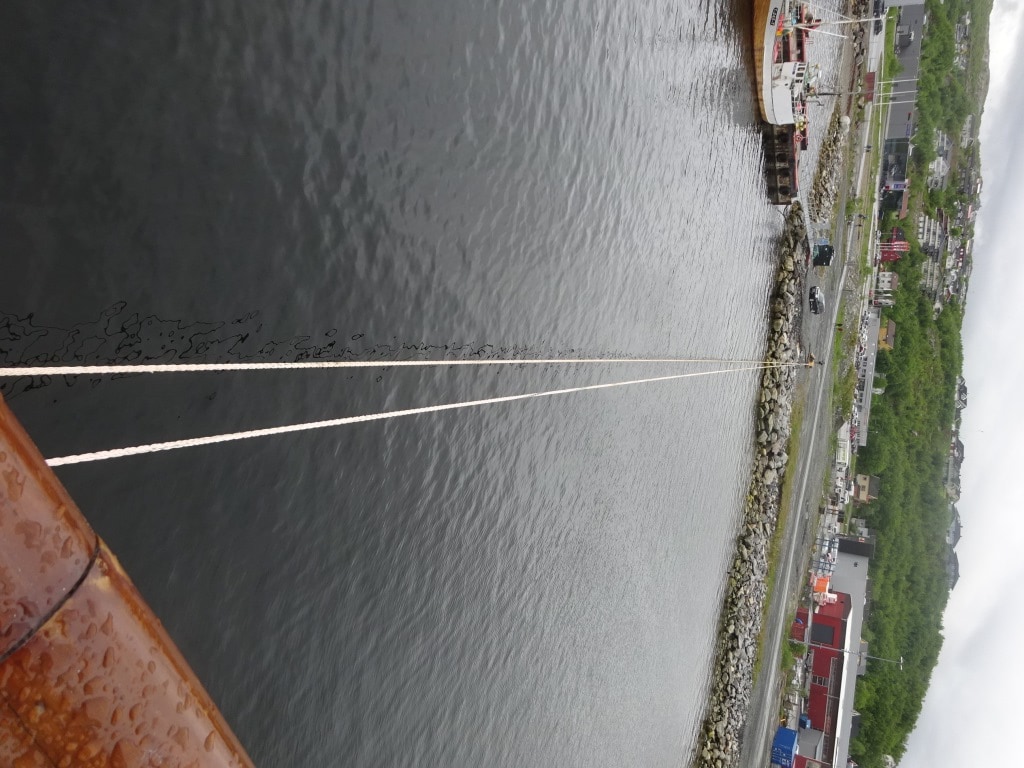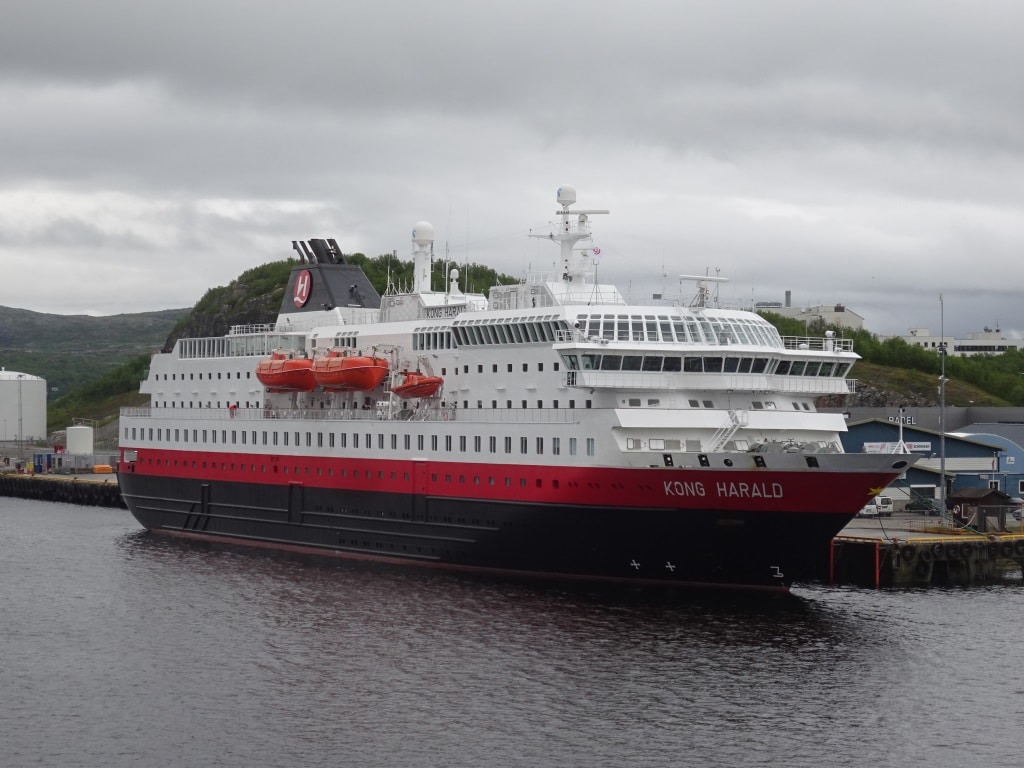After our windy adventure yesterday, Crete was a bit of a relief. There was only a gentle breeze blowing when we arrived. That gave the option to swing on arrival without any worries and then be ready to shoot straight out on departure.
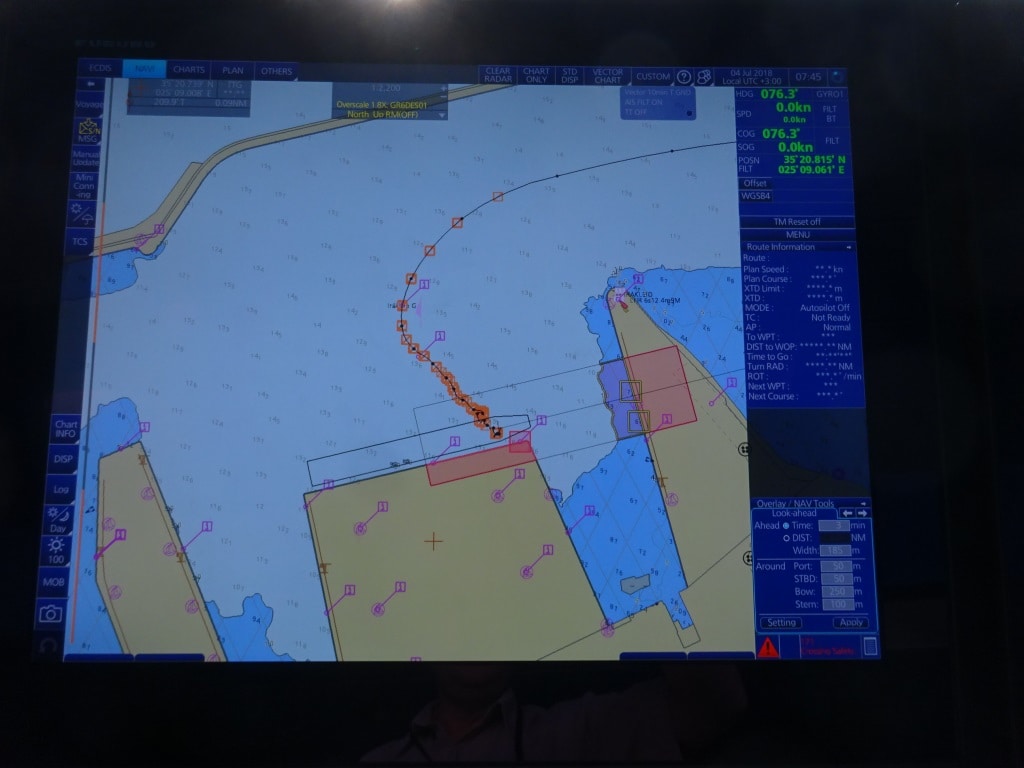
The docking. The orange squares indicate the movement of the bridge which in this case was also the pivot point of the ship. There where the curve goes to a straight line is the moment the ship has almost completed its turn and now goes bodily sideways.
With it being so nice and quiet the Captain decided to let a 3rd officer do the maneuvering. The company encourages the captains to let all the navigation officers get some experience in ship handling and this port, on a not so windy day, is a nice opportunity. The turning basin is more than wide enough for the Oosterdam to swing around in but having “concrete” on both sides of the ship when making the turn is just enough to raise the stress level for a junior officer to make it a challenging affair and a good learning experience. I was once again on the bow with the Cadet and today it was a lot easier than yesterday. The linesmen were only upset once and for the rest it all went very smoothly.
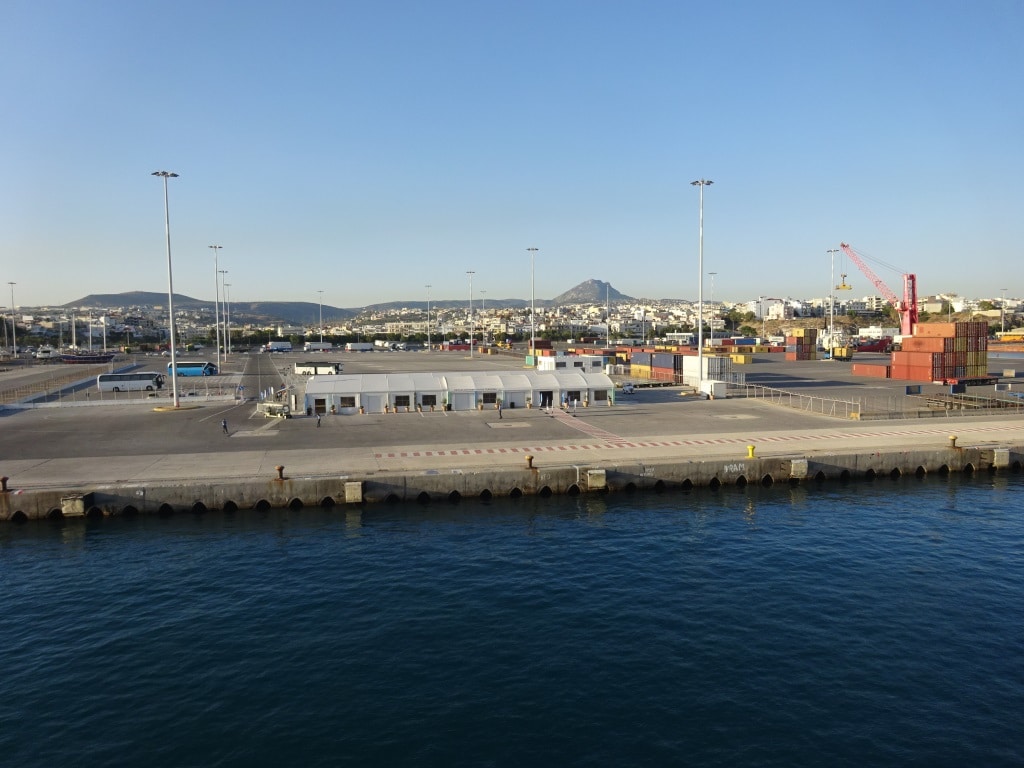
Whatever way you spell the name, the area remains very dry and sandy. The Marque in the front is especially there for embarkation days as there are now also cruise ships who start their cruise from Heraklion. A shuttle bus takes the guests from the ship to the Terminal Gate entrance located behind the containers. From there you can walk into town, although most guests took the tour to Knossos today.
I still have not figured out if the name is spelled Iraklion or Heraklion and the locals must have issues as well as I saw emails coming by, from the agent, using both versions in the name. A few years ago they were very emphatic about it being Iraklion but now both spellings seem to be around again.
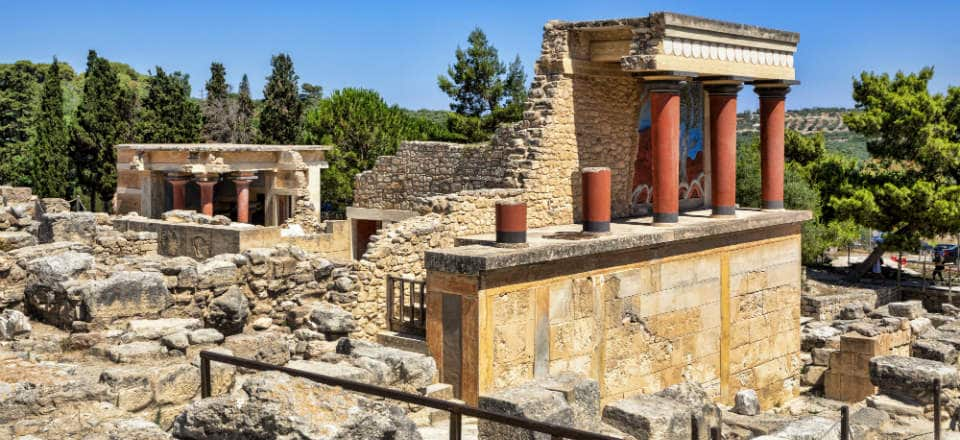
Knossos. I think this is the best known postcard picture of Knossos and most likely also the best selling one. No doubt the maker has long and happily retired and is now living off the license fee coming in.
Crete is part of Greece but it has its completely own culture and in the grey mists of time they were totally separate from what is now the Greek main land. It had a rich culture and the many archeological sites bear witness to date with as the main highlight the Palace of Knossos. Which would not have looked much like a palace if it had not been partly been rebuilt a 100 years ago. The experts are still arguing whether it was a good idea or whether it was heresy but at least those without a lot of ancient knowledge can see something that otherwise would had to be visualized.
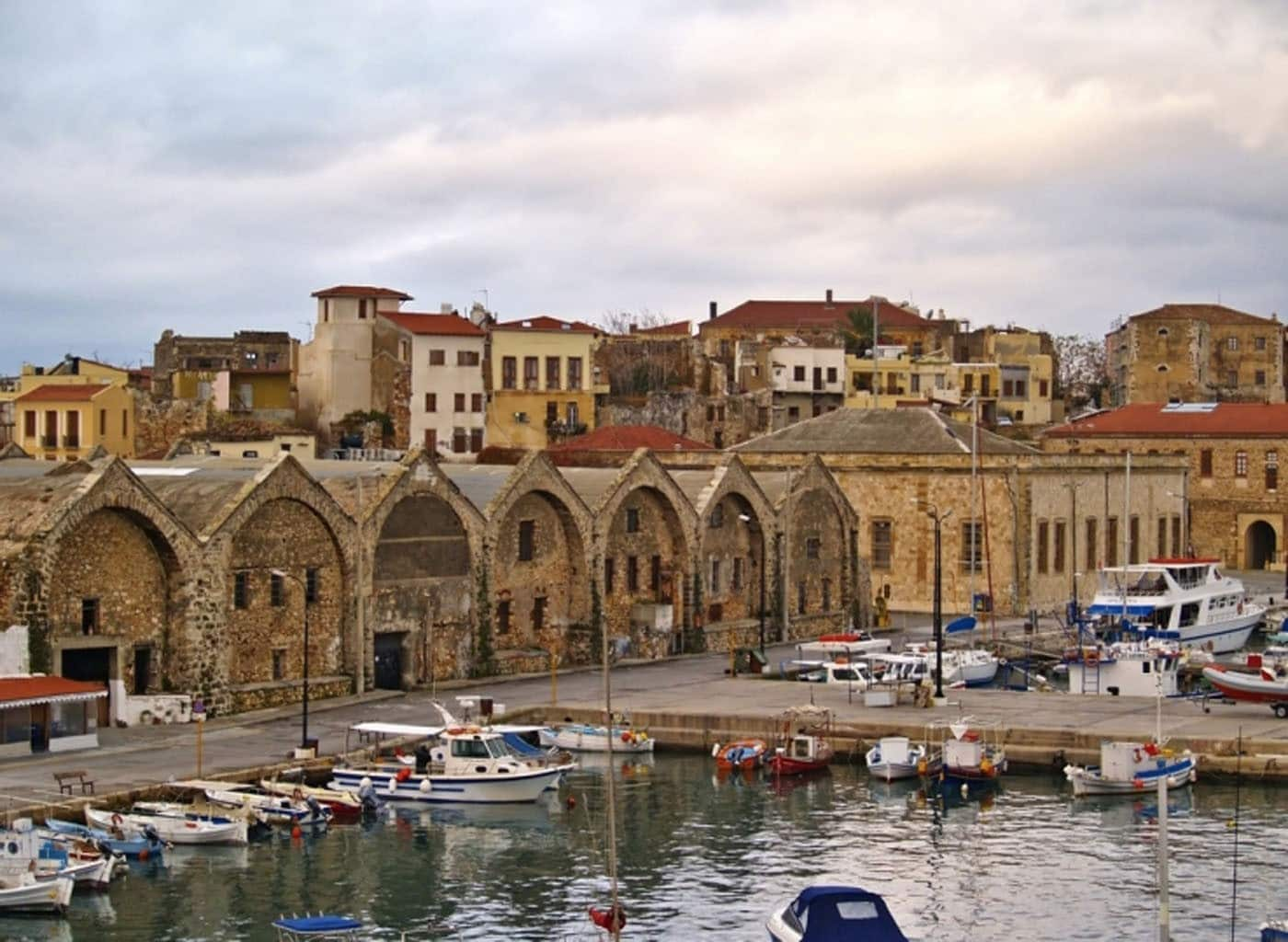
The Ware houses of the Venetian Shipyard in Chania. Located just outside the city walls. The old town right behind it is a great place to go out in the evening.
My preference goes to another town, located in the west of Crete, called Chania. This was for many years a stronghold of the Republic of Venice and there are still warehouses there (With the Lion of Venice above the entrance door) which reminds everybody of those days. The old Venetian dockyard, constructed in the 16th. Century for their War Fleet is still in very good shape and dominates the water front with the old town behind it. Somehow I find that town more “Crete” then Heraklion which is the capital. It has a small harbor but it is not suitable for cruise ships as the afternoon wind creates too much swell to keep a safe tender operation going. Thus we stick with Heraklion. Then to the east there are a large number of towns and villages which now all cater for sun, sea and beach tourists, mainly Europeans, who want to make to make sure that they get enough sunshine, even in the summer time.
Nearly all the tourist areas are at the North Side of the island where there is at least a cool breeze (sometimes a cool storm) blowing and that leaves the inland quite unspoilt; and in some area’s even very poor. I do not know how it is now but a number of years ago, when I ventured inland; it did not look like that the large sums of money spent by the tourists was reaching everybody further inland. I hope it has changed as Greece has some monetary problems of its own at the moment; as previous governments have been a little bit too creative with their book keeping and “investments”.
We sail from there to Piraeus where we will arrive early in the morning. Between 05.00 hrs. and 06.00 hrs. all the overnight ferries (including those from Crete) are coming in and they all have preference. So the captain has to decide to be either early or late. As you can never be sure if one or two ferries are coming in after 06.00 hrs. it is better to be early. So the plan is to be at the pilot station at 04.20 hrs. and to be docked before the ferry parade begins.
It will be even warmer tomorrow than it was today: 96oF or 36oC and hardly any wind. That latter is good as the ship has to be parked into a difficult spot. The warmth is not. I was hoping to go to a bookstore that sells Greek shipping books (very hard to get outside Greece) but due to our dock it will be a very long walk. So it will be a battle of the heat against the brain, whether I will go or not.
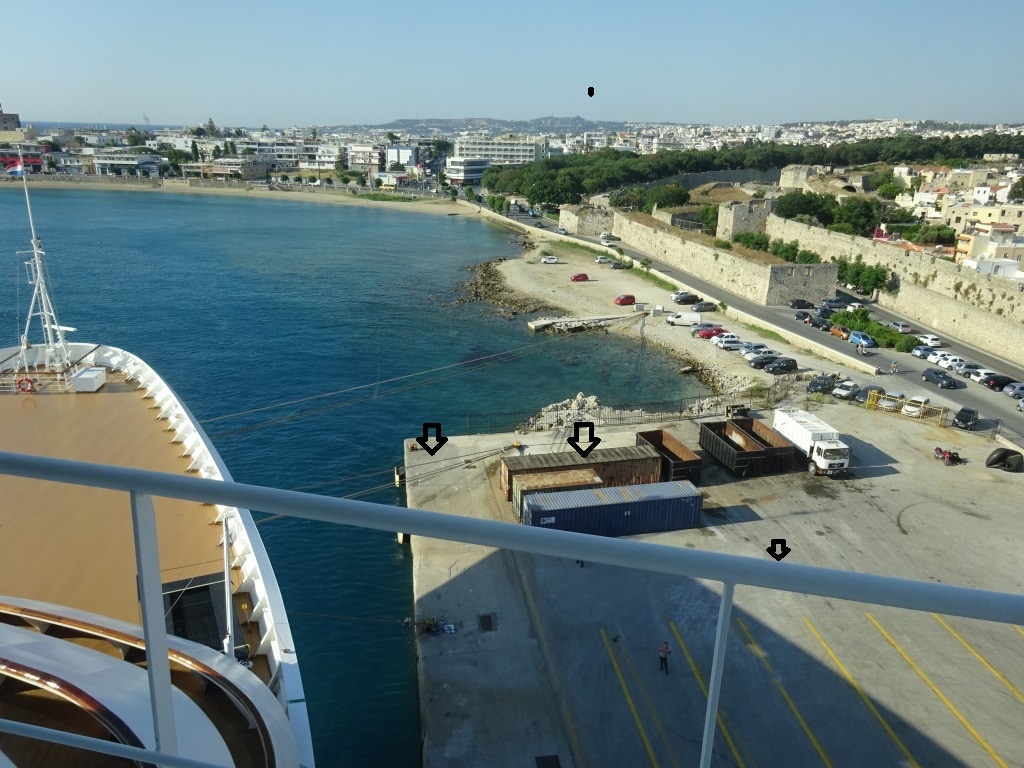
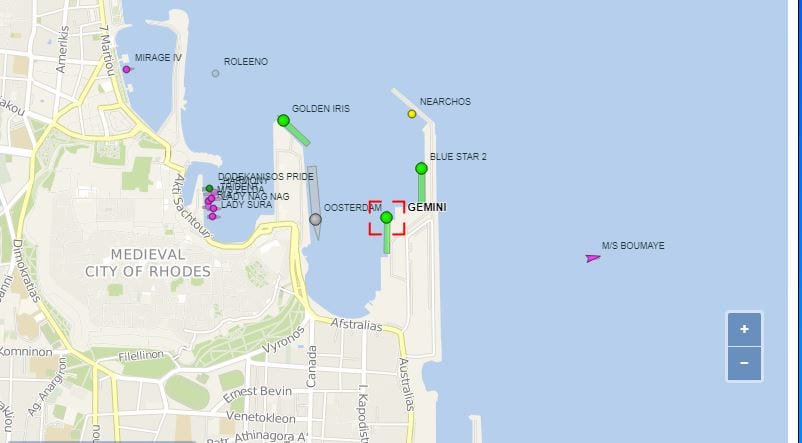
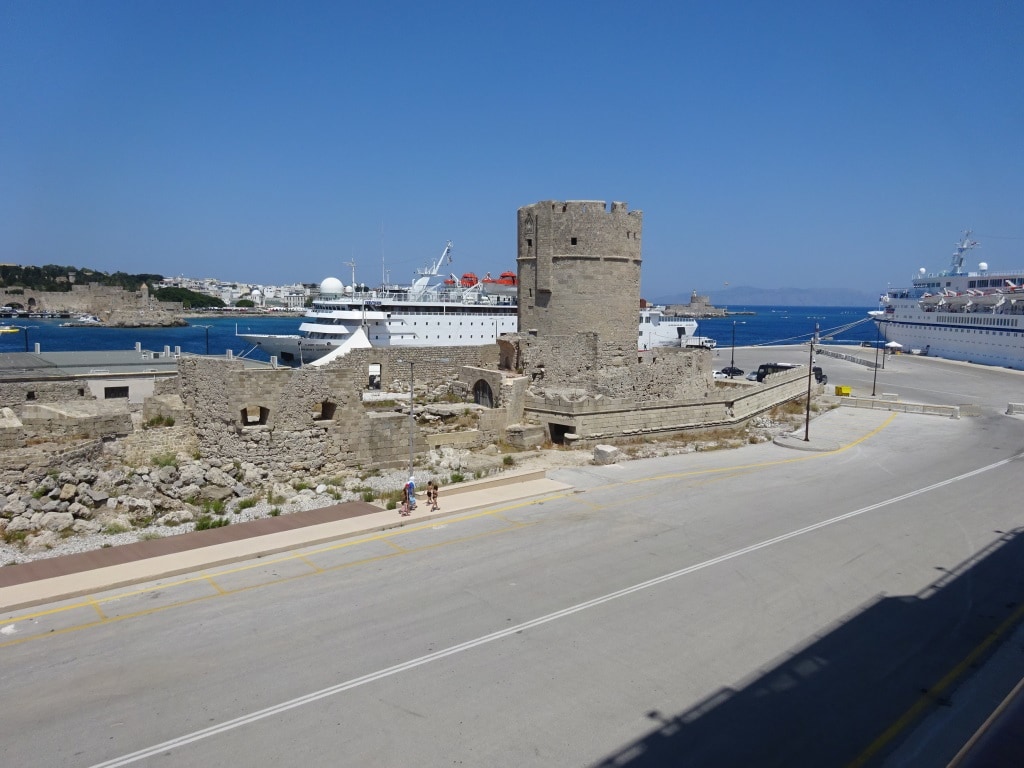
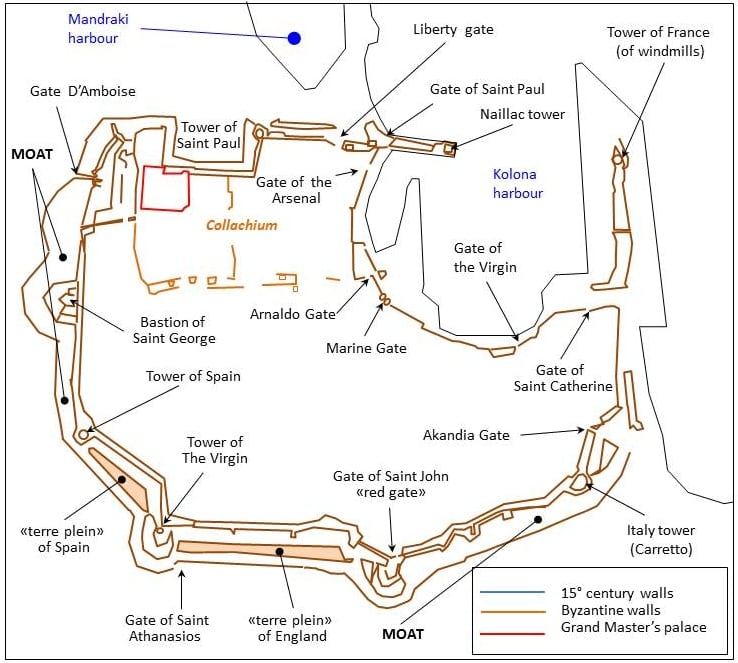
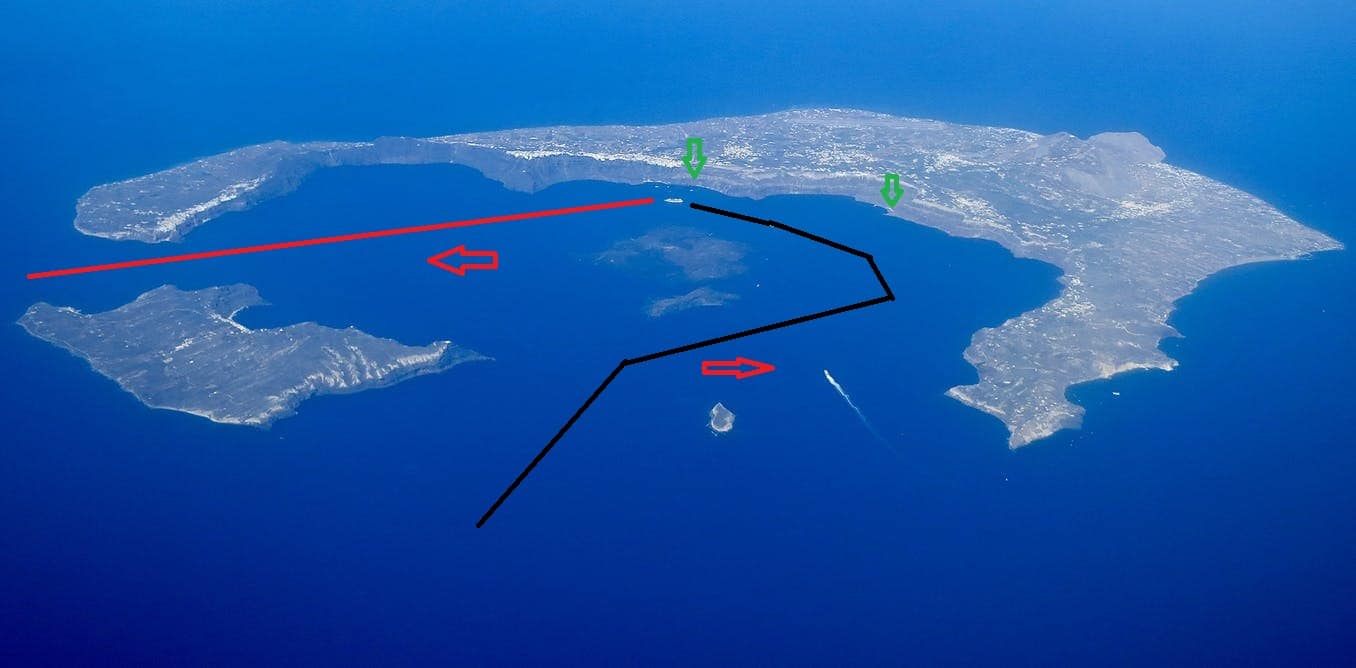
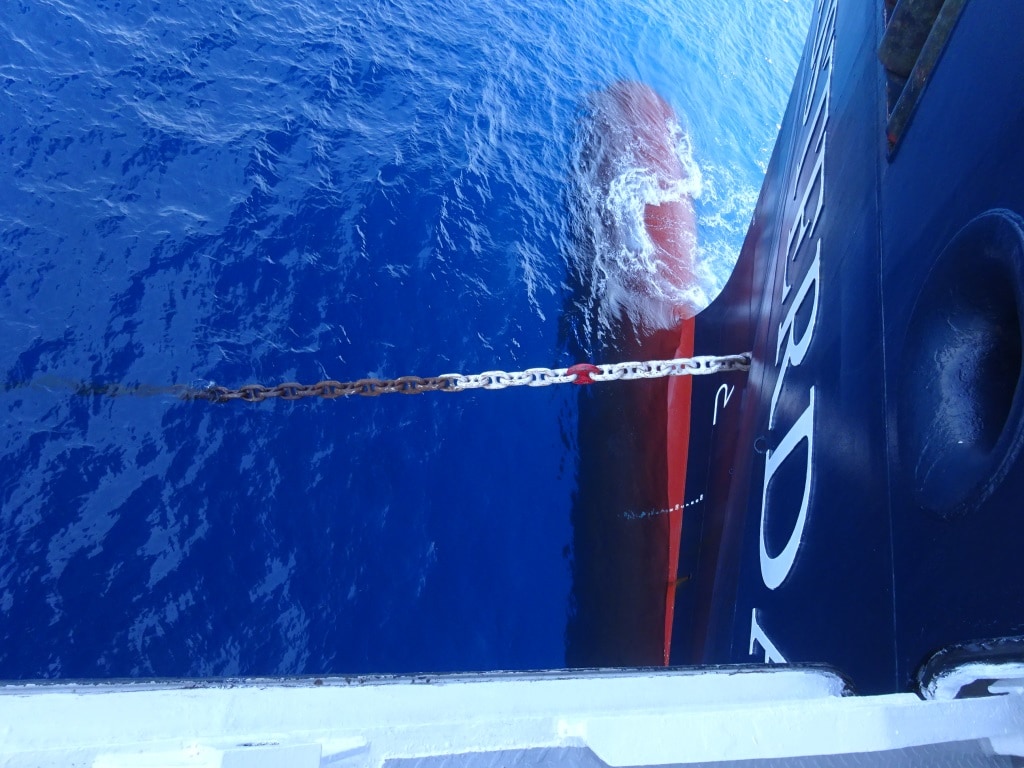
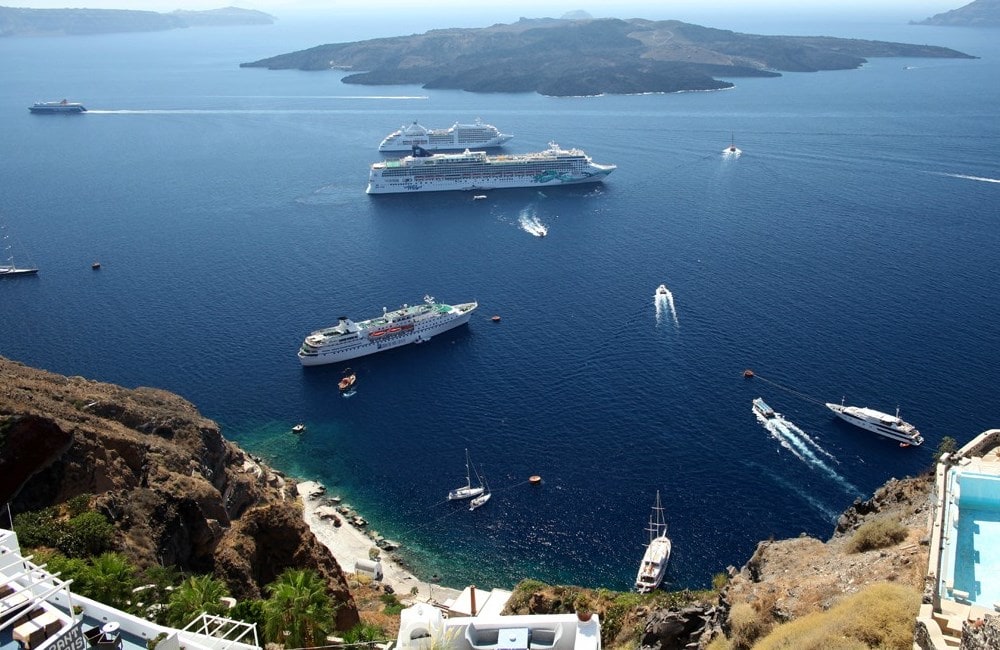
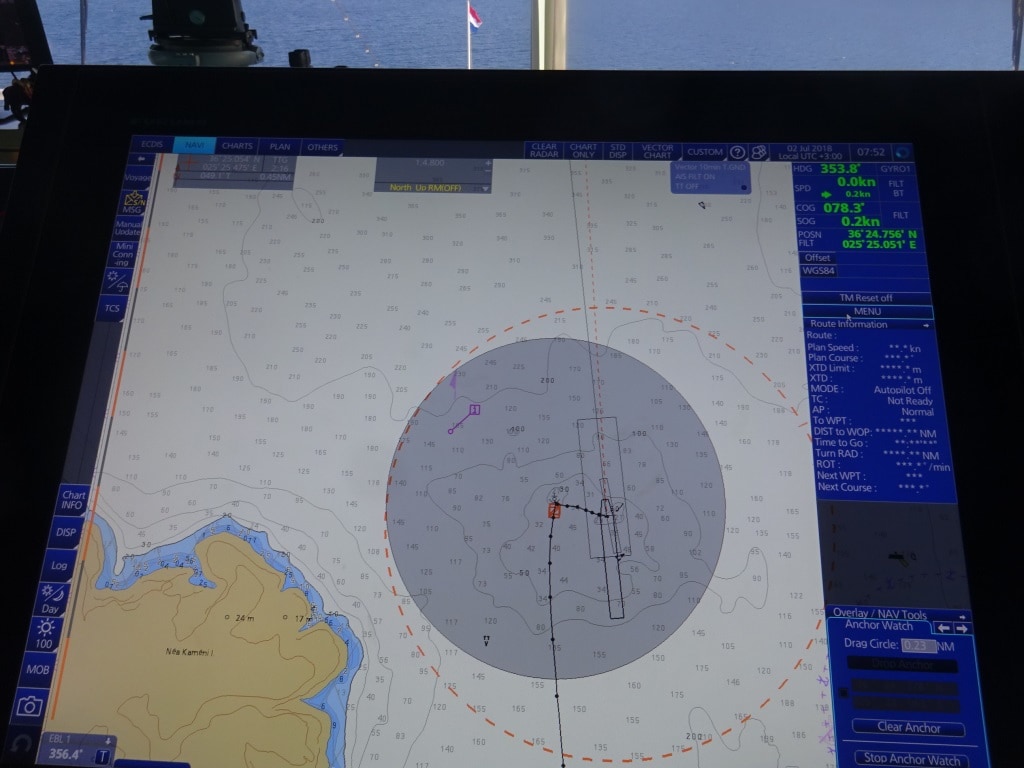
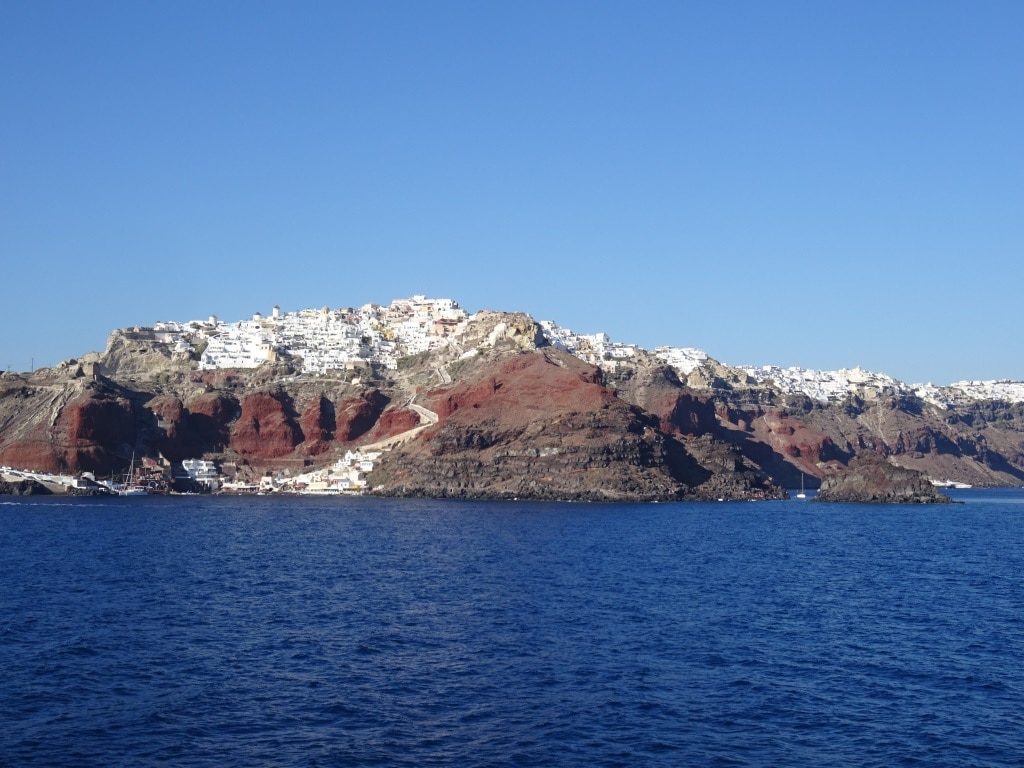
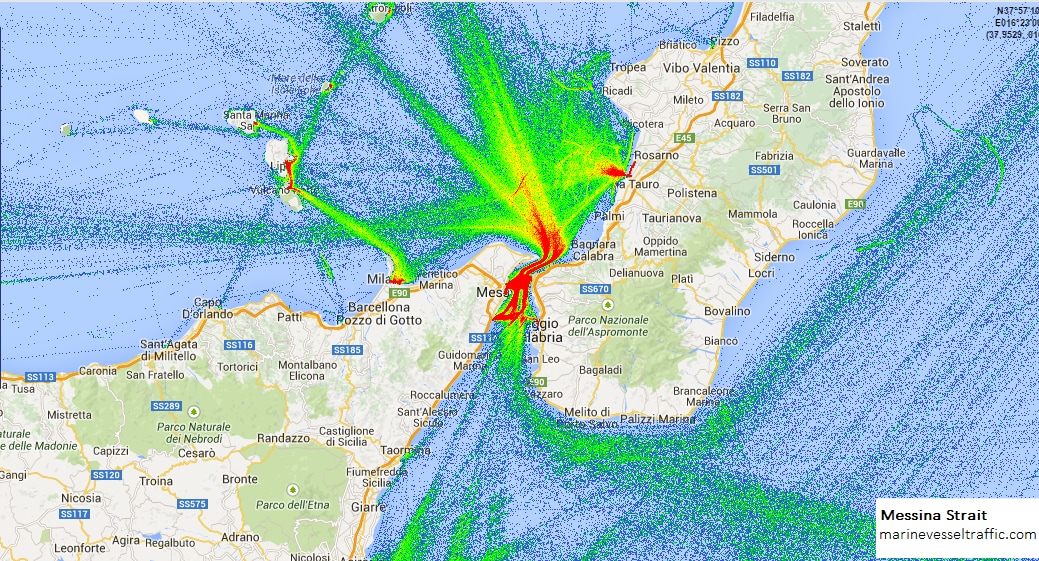
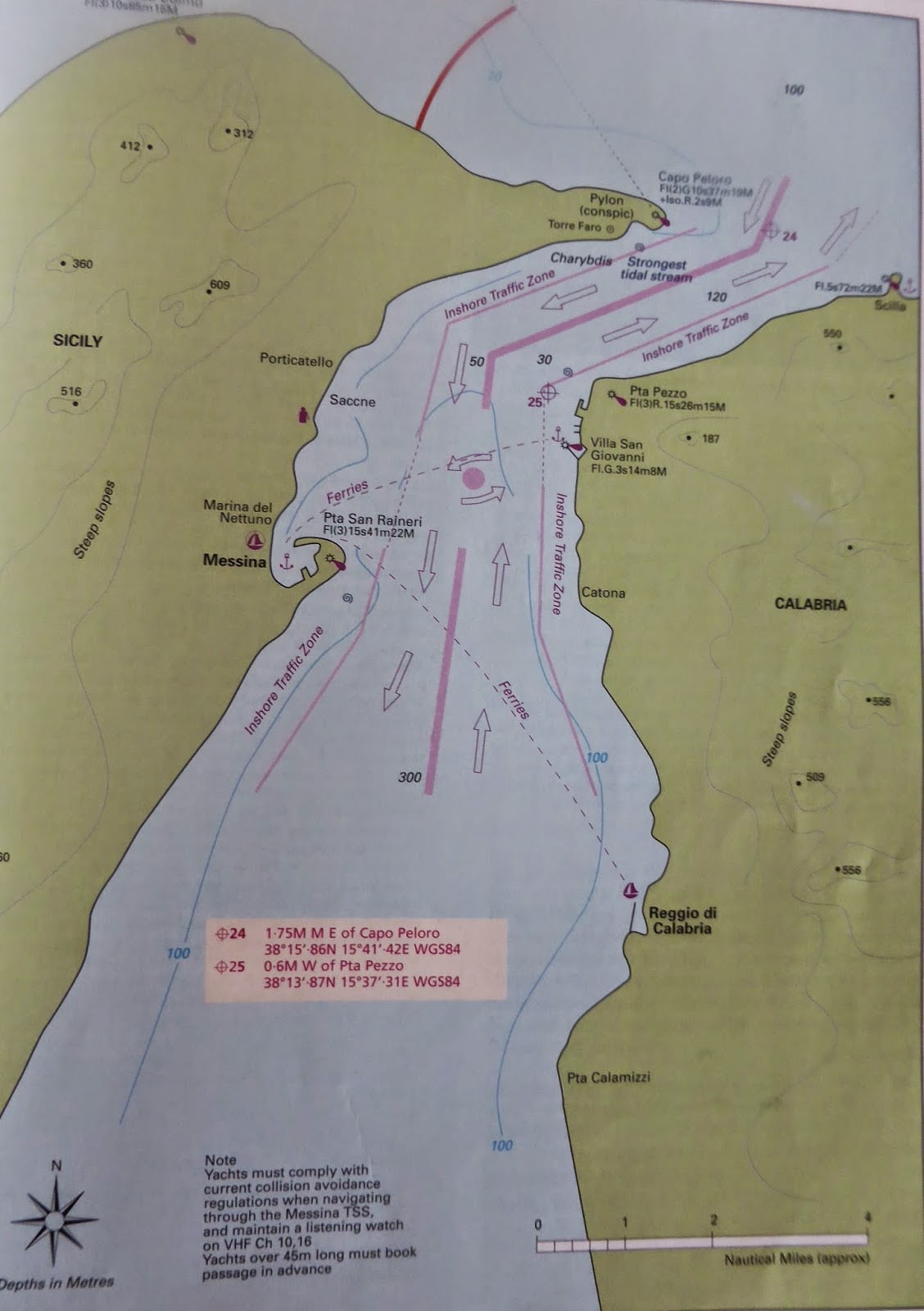
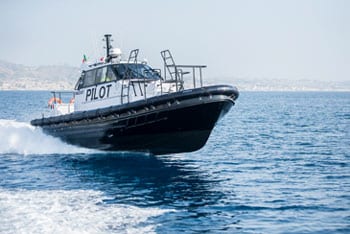
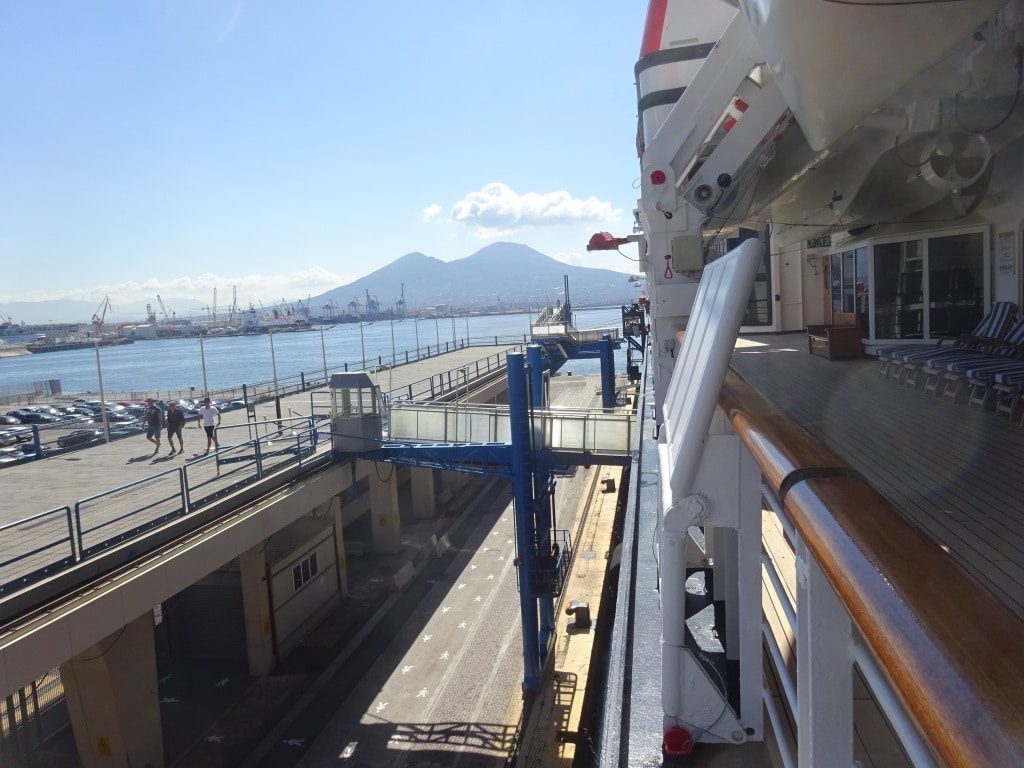
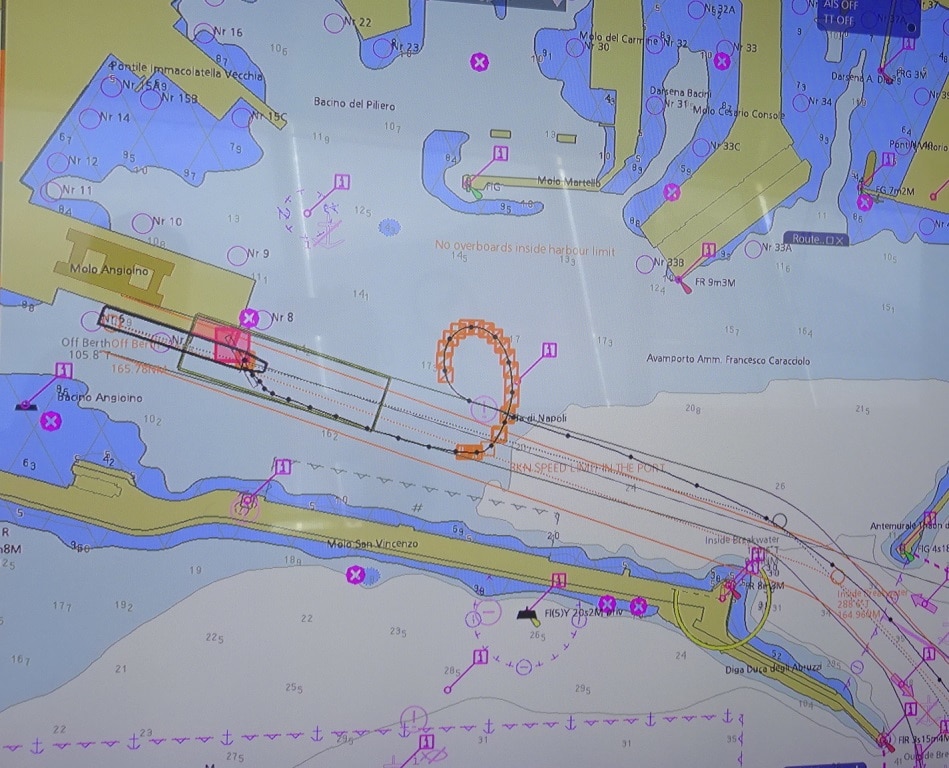
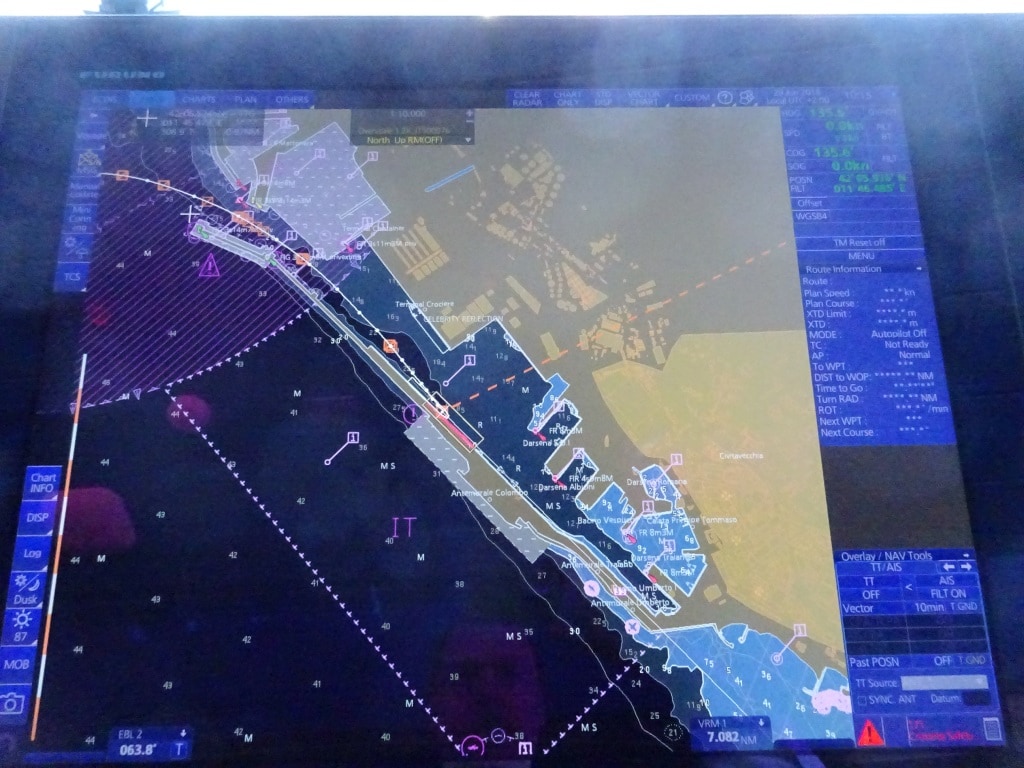
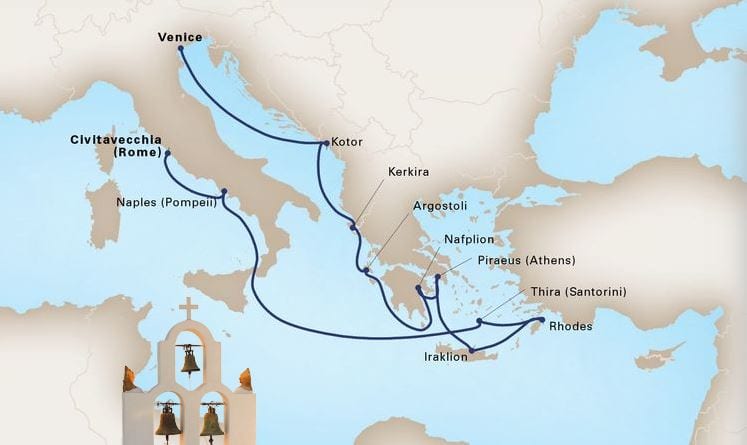 Today we said goodbye to about 90% of our guests and by 11.30 the new guests were arriving. And they are going on a 12 day cruise around Italy as we will end up in Venice eventually. But we will also call at the Greek Islands, Dubrovnik and Kotor. If everything goes well e.g. according to the port scheduling, we will have the luxury of docking in Kotor which is not that usual for larger ships. So we will see and hope. Dubrovnik is also going to be of interest as the authorities are in the process of reducing the crowds. Thus far, not yet with blocking ships or overland buses from coming in but by asking the tour company’s and cruise companies to stagger their arrivals. There are days of 7 cruise ships and at a certain moment of the day all of those on board are in that one square which makes up the center of the old town. That is not good for anybody, let alone those who live there, and thus the authorities trying to deal with it,……….. but with a gentle touch.
Today we said goodbye to about 90% of our guests and by 11.30 the new guests were arriving. And they are going on a 12 day cruise around Italy as we will end up in Venice eventually. But we will also call at the Greek Islands, Dubrovnik and Kotor. If everything goes well e.g. according to the port scheduling, we will have the luxury of docking in Kotor which is not that usual for larger ships. So we will see and hope. Dubrovnik is also going to be of interest as the authorities are in the process of reducing the crowds. Thus far, not yet with blocking ships or overland buses from coming in but by asking the tour company’s and cruise companies to stagger their arrivals. There are days of 7 cruise ships and at a certain moment of the day all of those on board are in that one square which makes up the center of the old town. That is not good for anybody, let alone those who live there, and thus the authorities trying to deal with it,……….. but with a gentle touch.